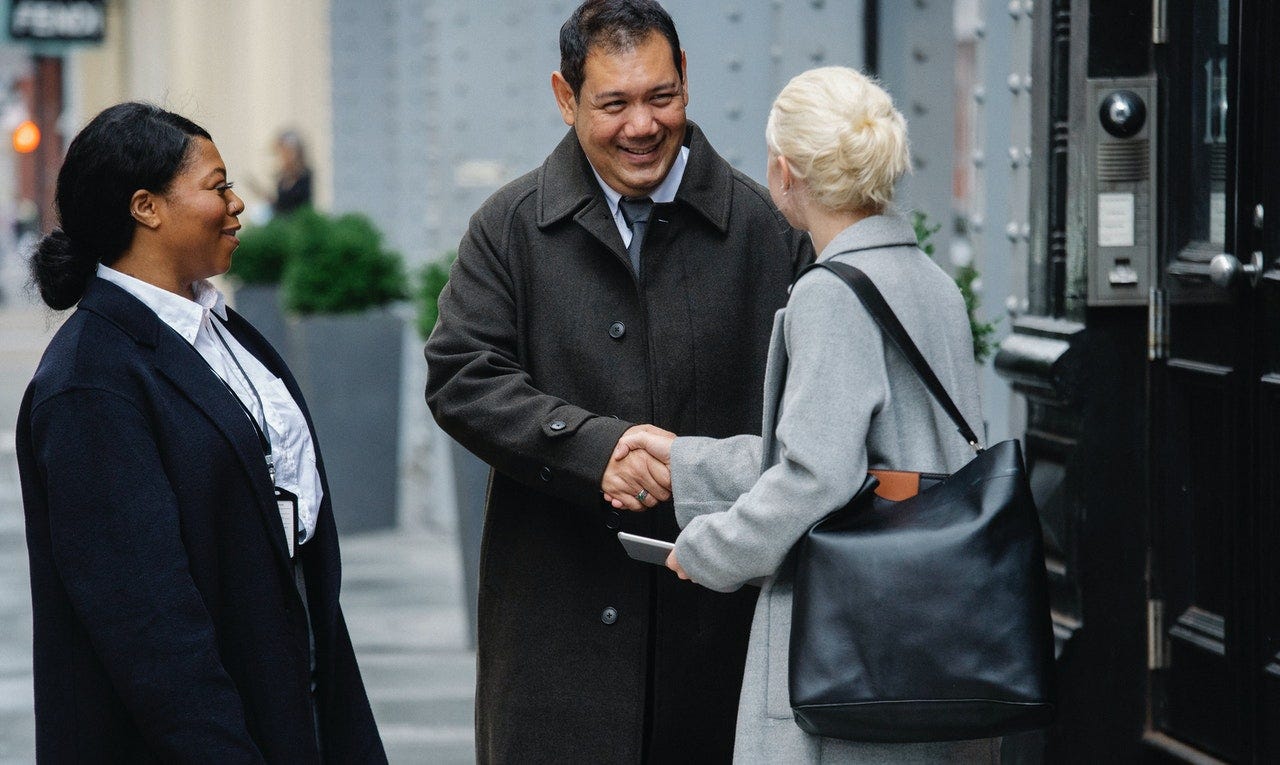FAQs for German greetings

1. What’s the difference between greeting a friend versus a colleague or professional acquaintance in German?
In general, it is best to stick with a formal greeting like “Guten Tag” when talking to a professional acquaintance, whereas with friends you can use informal greetings like “Na?” or “Hallo!”. Another very important thing to keep in mind is the difference between the casual “du” and the formal “Sie”. This distinction makes or breaks the difference between the casual “Grüß dich!” and the formal “Grüß Sie!”.
It is, however, quite common for German workplaces to revert to a more casual way of speaking once you have built a relationship. A good way of figuring out which greeting to use is to pay attention to the way a particular person greets you and respond in kind.
2. What are some German greeting faux pas?
A common faux pas is mixing up the formal “Sie” with the casual “du”. “Sie” is used with strangers, especially if they are older. It is also commonly used in educational settings and business settings. Mixing up “Sie” and “du” can easily lead to mistakes, because it affects the grammatical structure of the sentence you are trying to say.
When in doubt it is usually best to start off with using the formal “Sie”. If your counterpart is okay with being addressed with the casual “du”, they will let you know. For more detailed info on the ins and outs of “du” and “Sie”, click here.
3. How do you greet someone in writing?
You can start a letter with “Lieber…” (if you are addressing a man) or “Liebe…” (if you are addressing a woman). This is the equivalent of the English “Dear…”. When writing to somebody in a more formal setting, you can use “Sehr geehrte…” (if you are addressing a woman) or “Sehr geehrter…” (if you are addressing a man).
If you don’t know who you are writing to, you can’t go wrong with “Sehr geehrte Damen und Herren…”. This formal phrase roughly translates as “Most honored ladies and gentlemen…”. While this may sound very old-school, it is still a common way of writing in the German-speaking world.
However, it does depend on who you are writing to: If you are writing to a young start-up in Berlin, you will most likely be okay starting your letter with “Guten Tag!”.






